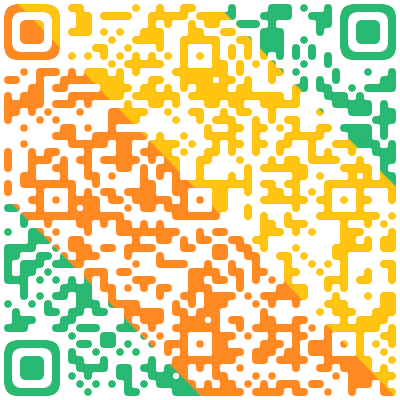Text 1 Habits are a funny thing.We reach for them mindlessly,setting our brains on auto-pilot and relaxing into the unconscious comfort of familiar routine."Not choice,but habit rules the unreflecting herd,"William Wordsworth said in the 19th century.In the ever-changing 21st century,even the word"habit"carries a negative implication.So it seems paradoxical to talk about habits in the same context as creativity and innovation.But brain researchers have discovered that when we consciously develop new habits,we create parallel paths,and even entirely new brain cells,that can jump our trains of thought onto new,innovative tracks.Rather than dismissing ourselves as unchangeable creatures of habit,we can instead direct our own change by consciously developing new habits.In fact,the more new things we try—the more we step outside our comfort zone—the more inherently creative we become,both in the workplace and in our personal lives.But don"t bother trying to kill off old habits;once those ruts of procedure are worn into the hippocampus,they"re there to stay.Instead,the new habits we deliberately ingrain into ourselves create parallel pathways that can bypass those old roads."The first thing needed for innovation is a fascination with wonder,"says Dawna Markova,author of"The Open Mind"and an executive change consultant for Professional Thinking Partners."But we are taught instead to"decide,"just as our president calls himself"the Decider.""She adds,however,that"to decide is to kill off all possibilities but one.A good innovational thinker is always exploring the many other possibilities."All of us work through problems in ways of which we"re unaware,she says.Researchers in the late 1960s discovered that humans are born with the capacity to approach challenges in four primary ways:analytically,procedurally,relationally(or collaboratively)and innovatively.At the end of adolescence,however,the brain shuts down half of that capacity,preserving only those modes of thought that have seemed most valuable during the first decade or so of life.The current emphasis on standardized testing highlights analysis and procedure,meaning that few of us inherently use our innovative and collaborative modes of thought."This breaks the major rule in the American belief system—that anyone can do anything,"explains M.J.Ryan,author of the 2006 book This Year I Will...and Ms.Markova"s business partner."That"s a lie that we have perpetuated,and it fosters commonness.Knowing what you"re good at and doing even more of it creates excellence."This is where developing new habits comes in.21.The Wordsworth’s view,“habits”is claimed by being________.
A. casual
B. familiar
C. mechanical
D. changeable
查看答案
热门试题
在窗体上画1个文本框,名称为Text1,然后编写如下程序: Private Sub Form_Load() Open"d:empdat.txt"For Output As 1 Text1.Text="" End Sub Private Sub Text1_KeyPress(Key Ascii As Integer) If (10) =13 Then If U Case(Text1.Text)= (
在窗体(Name属性为Form1)上画两个文本框(其Name属性分别为Text1和Text2)和一个命令按钮(Name属性为Command1),然后编写如下两个事件过程: Private Sub Command1_Click()A=Text1.Text+Text2.TextPrint A End Sub Private Sub Form Load()Text1.Text=" "Text2.Text
在窗体上画—个文本框,名称为Text1,然后编写如下程序: Private Sub Form_Load() Open"d:empdat.txt"For Output As 1 Text1.Text="" End Sub Private Sub Text1_KeyPress(Key Ascii As Integer) IfKeyAscii=13 Then If UCase(Text1.Text)=
程序代码:Text1.Text = "Visual Basic程序设计" 则Text1,Text ,和"Visual Basic程序设计"分别代表()
在窗体上画一个文本框,名称为Text1,然后编写如下程序: Private Sub Form_Load() Open"d:empdat.txt"For Output As1 Text1.Text:“” End Sub Private Sub Text1_KeyPress(KeyAscii As Integer) If (13) =13 Then If UCase(Text1.Text1= (14)
在窗体上画一个命令按钮和一个文本框,其名称分别为Command1和Text1,然后编写如下事件过程: Private Sub Command1_Click() Dim inData As String Text1.Text=" " Open "d:Myfile.txt" For (14) As1 Do While (15) Input1,inData Text1.Text=Text1.Text+i
在窗体上画一个命令按钮和一个文本框,其名称分别为Command1和Text1,然后编定如下事件过程: Private Sub Command1_Click() Dim inData As String Text1.Text:“” Open "d:myfile.txt" For (10) As1 Do While (11) Input 1,inData Text1.Text=Text1.Text+i
在窗体上画一个命令按钮和一个文本框,其名称分别为Command1和Text1,然后编写如下事件过程: Private Sub Command1_Click() Dim inData As String Text1.Text="" Open"d:myfile.txt"Fo (8) As1 Do While (9) Input 1,inData Text1.Text=Text1.Text+inData
在窗体上画两个文本框和一个命令按钮,然后在代码窗口中编写如下事件过程: Private Sub Command1_Click() Text1.Text = "计算机" Text2.Text = Text1.Text Text1.Text = "等级考试" End Sub 程序运行后,单击命令按钮,两个文本框(Text1和Text2)内容分别为 (6) 和 (7) 。
在窗体上画两个文本框和一个命令按钮,然后在代码窗口中编写如下事件过程: Private Sub Coraraand1_Click() Text1.Text="计算机" Text2.Text=Text1.Text Text1.Text="等级考试" End Sub 程序运行后,单击命令按钮,两个文本框(Text1和Text2)内容分别为 和 。
在窗体上画一个文本框,名称为Text1,然后编写如下程序: Private Sub Form_Load() Open"d:empdat.txt"For Output As 1 Text1.Text=" " End Sub Private Sub Text1_KeyPress(KeyAscii As Integer) If______=13 ThenIf UCase(Text1.Text)=____
在窗体上画一个文本框,名称为Text1,然后编写如下程序: Private Sub Form_Load() Open "d:empdat.txt" For Output As 1 Text1.Text="" End Sub Private Sub Text1_KeyPress(KeyAscii As Integer) If (8) =13 Then If UCase(Text1.Text)= (9
在窗体上画一个文本框,名称为Text1,然后编写如下程序: Private Sub Form_Load() Open"d:empdat,txt"For Output As1 Text1.Text=" " End Sub Private Sub Text1_KeyPress(KeyAscii As Integer) If KeyAscii=13 ThenIf UCase(Text1.Text)=__
在窗体上画 1 个文本框,名称为 Text1,然后编写如下程序:Private Sub Form_Load()Open "d:empdat.txt" For Output As 1Text1.Text = "" End SubPrivate Sub Text1_KeyPress(KeyAscii As Integer) If _________= 13 ThenIf UCase(Text1.Tex
在窗体(Name属性为Form1)上画两个文本框(其Name属性分别为Text1和Text2)和一个命令按钮(Name属性为Command1),然后编写如下两个事件过程: Private Sub Command1_Click() a = Text1.Text + Text2.Text Print a End Sub Private Sub Form_Load() Text1.Text = " "
cattext1text2>text的含义是,将text1,text2两个文件连接起来输入到()。
窗体上有名称分别为Text1、Text2的文本框,名称为Command1的命令按钮。运行程序,在Text1中输入“FormList”,然后单击命令按钮,执行如下程序:Private Sub Command1_Click()Text2.Text=UCase(Mid(Text1.Text,5,4))End Sub在Text2中显示的是()。
在窗体上画两个文本框(其名称分别为Textl和Text2)和一个命令按钮(其名称为 Command1),然后编写如下两个事件过程: Private Sub Command1_Click()Text1.Text="Microsoft Visual Basic" End Sub Private Sub Text1_Change()Text2.Text=UCase(Text1.Text) End Sub
在窗体上画一个命令按钮和一个文本框,其名称分别为Command1和Text1,然后编写如下事件过程: Private Sub Command1_Click() Dim inData As String Text1. Text="" Open "d: myfile. txt "For______As 1 Do While ______ Input 1,inData Text1. Text=Text1
下面Change事件过程中,文本框控件Text1用来接收数字字符的输入,该事件过程的作用是( )。Private Sub Text1_Change ( ) Text2.Text=Str(6.28* Val(Text1.Text)) End Sub



